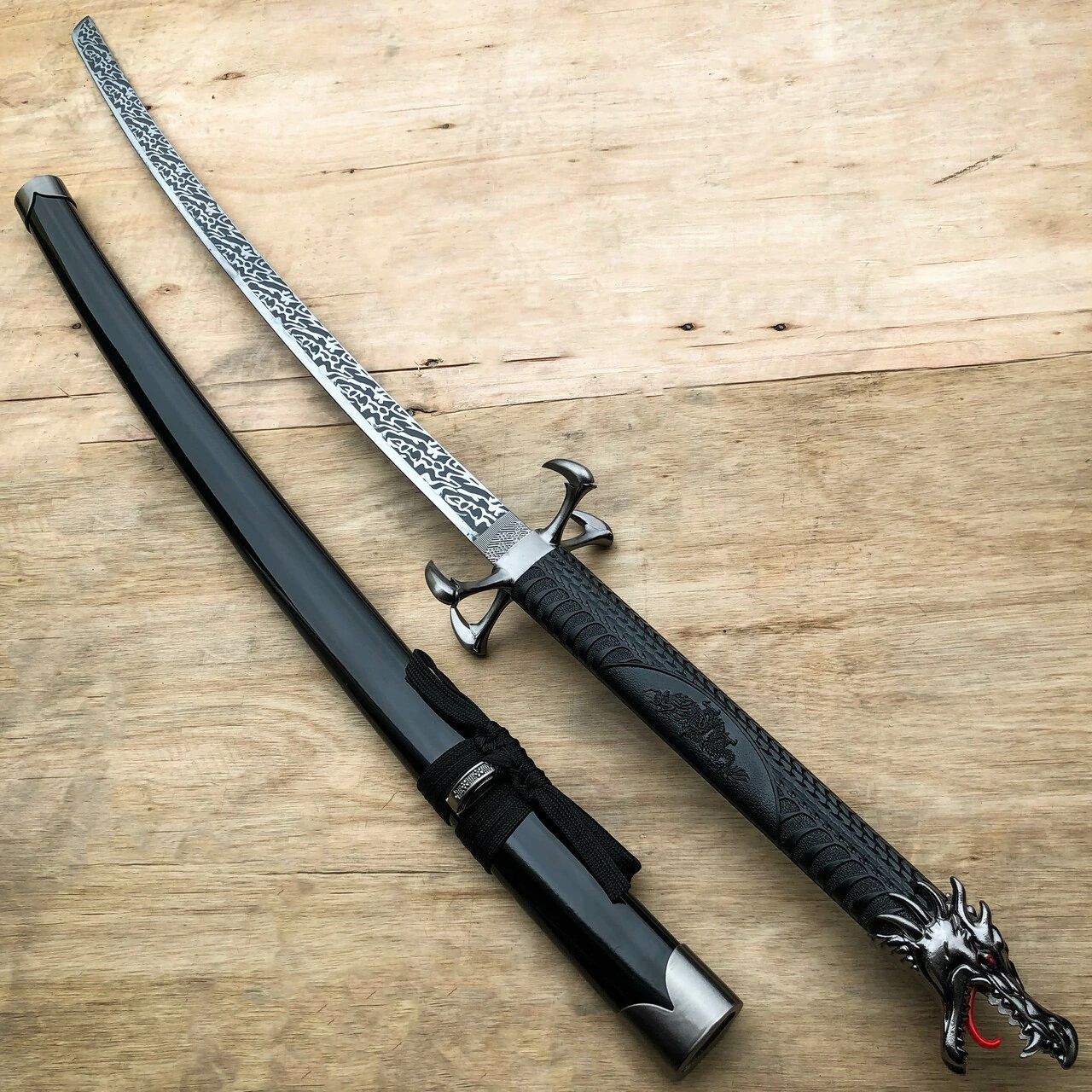The Katana Sword
The katana is a long Japanese sword that was worn with its cutting edge up. It replaced the earlier tachi sword and allows a single motion to draw and attack.
Katanas have a special place in popular culture: From Beatrix Kiddo slaughtering Crazy 88 in Kill Bill Vol 1 to Deadpool turning a goon into shish kebab, the sword has appeared in some of the most memorable action movies.
Blade
A katana’s blade is its signature component and the source of its cutting prowess. A katana’s blade is crafted from a specialized steel known as Tamahagane, which results from a laborious smelting process that yields layered steels with varying carbon concentrations. Tamahagane is highly prized by swordsmiths for its strength and resilience, as well as for its ability to hold a razor-sharp edge.
The smith uses two different types of metal to form the blade: high-carbon, which allows for a sharp edge, and low-carbon, which increases toughness and shock absorption. A sword made solely from one type of metal would dull too quickly and be too brittle.
The blade’s thickness, width, and depth all contribute to its durability and performance. Most katanas feature a longitudinal groove called the hi, which distributes shock stress and protects the sword from damage. Some katanas also come with decorative elements called menuki, which are used as tsuka ornaments.
Handle
The handle of a katana, called the tsuka, is one of the best designed sword handles in history and features many layers that help in handling, precision, and edge alignment. The first layer is the samegawa, which is a wrap that covers the core of the handle. This material, traditionally made from ray skin, is tough, course and grippy to improve the gripping ability of the sword.
The tsuka-ito is the next layer, which is a cord wrapping that wraps around the samegawa and is usually made from silk or cotton. This layer enhances the aesthetic of the tsuka and is also thicker to better absorb blows during combat.
The final piece is the Kashira (pommel), which is a decorative piece that also enhances the gripping ability of the sword. It can be engraved with designs of animals, plants, parts of nature or personal symbols. It is also very well made and strong so it can be used to hit opponents in close combat.
Saya
The Saya is the scabbard that houses the blade for katana, wakizashi, and iaito swords. It is made of wood and can be simple or ornate as the sword owner wishes. It is usually lacquered on the outside and painted with different colors.
The blade is forged from tamahagane, a specialized Japanese steel that goes through a laborious smelting process that yields layered steels with varying carbon concentrations. This unique technique allows the katana to be both razor sharp and resilient.
A curved blade is also considered more effective at cutting because it follows the motion of your cut. This makes it easier to slice through your target with less effort. It is recommended that you hone your katana to improve its edge and to make it as sharp as possible. This will require some time and dedication, but it will ultimately help you develop the skills you need to be a lethal warrior. Practice footwork, handling, precision, strikes and blocks until you can perform them with ease.
Scabbard
A katana comes with an obi, a black cord that secures the scabbard when it is worn. It is tied in a specific knot known as Tachi-musubi.
Traditionally, a scabbard was carved as a piece of art and was considered a treasured family heirloom. In modern times, sayas are typically lacquered, which protects the blade from environmental forces.
A long tang (also known as a full tang) is often found in high quality katanas. This allows for a stronger and more rigid handle. It also helps prevent the scabbard from warping or bending under pressure.
For those who are looking for a decorative sword, a Black Lotus Katana is an ideal choice. This display sword features a sharp and graceful 27 1/2″ high-carbon steel display blade with a faux hamon line that slides into a sleek black wooden scabbard. A golden-colored tsuba and gold-colored menuki complete the look. The scabbard is affixed to the tsuba with a seme-kana-mono and kashiwaba-kana-mono, two metal attachments that help shield the base of the sheath from cracking open.buy demon slayer katana online

